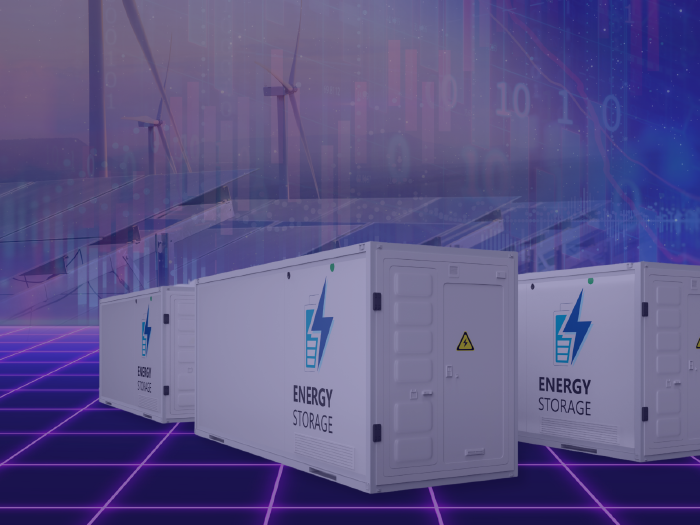News
better business decisions
Posted 1 year ago | 6 minute read

Cutting curtailment, the need for flexibility
Our customers have been asking a lot recently about the benefits of energy storage and flexible generation. So, we thought we would explore this topic with GridBeyond’s Head of DSR Services UK Shawn Duckett.
Growing need for flexibility
Our energy generation mix is changing and becoming increasingly dominated by renewable technologies.
2024 is set to be the first full year where UK low-carbon renewables generate more electricity than fossil fuels, with wind power close to becoming the single largest source of UK power for the first time. Over the 12 months to April, Britain’s wind farms produced 83TWh of electricity, compared to 81TWh from gas-fired power stations. It is also estimated that over the whole of 2024 wind share of UK electricity generation mix will reach 29% (compared to 35% from fossil fuels).
This was demonstrated on Wednesday 18 December 2024 when wind generated 22,523MW of electricity at 3:30am to achieve a new maximum wind record for Great Britain. This is the second time the record has been achieved, beating the last record of 22,243MW which has only stood since 15 December at 6:30pm.
With so much wind capacity available and more in the pipeline, unfortunately on the windiest days, National Grid ESO is forced to deliberately cap the amount of power coming from intermittent sources with the owners being paid to turn them off. If too many generators have a high peak power output at the same time, the combined power could overload the system. Known as ‘curtailment’, it is a persistent problem for renewable energy generators, and a costly one for the consumer and the planet. National Grid ESO’s Future Energy Scenarios suggest that we will have 15TWh of curtailment by 2030 in all Net Zero aligned scenarios.
According to Wastedwind Energy on 18 December wasted wind cost Britain: £4,172,190 switching off wind turbines and £8,453,911 buying energy elsewhere, or 84,887MWh of green power (enough to power 2 London’s for a day).

Source: wastedwind.energy
How do we fix it?
One of the answers to this question is to increase demand and either use or store this excess electricity during times of peak generation. This can be done by retrofitting or co-locating battery storage systems with renewables projects.
Batteries can soak up cheap renewable energy when it’s abundant, and discharge it when congestion has eased.
National Grid estimates that by 2050, we will have 35GW of battery storage across the whole of the UK (National Grid’s Future Energy Scenarios). Regen’s analysis indicates that we need around 20GW of storage as part of a 2035 net zero power system. Battery storage is a rapidly growing sector – RenewableUK reported that the battery storage pipeline had doubled in 12 months. But it’s not just utility scale projects that are coming online, forward thinking business owners are getting in on the act too, a large proportion of which are at the medium commercial and industrial scale, not just the large corporations or multi-national utility companies.
In some cases, there are tangible commercial benefits for business owners having battery storage on site. Energy storage can be used to lower consumption from the grid at peak times and the grid also financially rewards those who can reduce consumption and/or feed into the grid within a short space of time. Battery storage can help a business become more energy resilient and, if linked to generation on site, it helps the business to operate in a greener way. Optimisation technologies and finance can also be combined so that owners start to benefit immediately from having storage on site, without having to take an immediate financial hit.
The value of storage
With the pace of renewable energy generation continuing and the growth of other systems that put demand on the grid, such as EVs, we can only see the demand and value of energy storage systems increasing further.
In addition to generation, owners of hybrid projects can facilitate energy shifting applications with variable capacity and consumption patterns, allowing developers to shift dispatch to times of higher prices.
A range of grid-balancing services provide opportunities to earn revenue by supplying stored energy to the grid. There are also opportunities to trade energy from battery storage on the wholesale market to capitalise on fluctuating prices. But with multiple markets on which to trade, the investment landscape for battery storage is a complex arena. However, financial viability, understanding how and where you can stack revenues and provide an automated response is the key to proving the business case.
The landscape for battery storage is a complex arena as trading is already a big part of the value stack and, for some projects, represents the majority of income generated. This means real-time and continual modelling, that takes into account variables including weather variability and overall demand uncertainty is required to assess the most likely range of returns, allowing you to place your asset into the best available market.
GridBeyond’s smart trading solution combines machine learning, AI and data solvers with a trading team. We have long standing experience managing state of health and State of charge for battery assets, and significant investment in data science and accurate forecasting tools, our traders optimise all opportunities with high levels of confidence. This ensures that project owners are able to maximise the value not only from the renewables project, but from the battery storage asset.
Project finance
The company also recently agreed further project financing with Triodos Energy Transition Europe Fund. Triodos Energy Transition Europe Fund and GridBeyond are expanding their partnership via their joint venture GridBeyond Storage to accelerate the roll-out of Behind-the-Meter (BTM) battery energy storage systems (BESS) across the UK and Ireland. The fund commits EUR 11.25 million in this next phase, as part of a combined new investment of EUR 12.5 million in GridBeyond Storage.
Following a successful first two years of the partnership, both parties are committing to continued investment in this joint venture to drive the development of new energy projects. Building on recent success, GridBeyond Storage is now preparing to fund two ready-to-build BESS projects in Ireland and Scotland, totalling 8MWh. In parallel, GridBeyond Storage is exploring other cutting-edge opportunities, such as BTM solar PV and electric vehicle (EV) charging projects for commercial and industrial customers.

CaPex-Free Battery | Resilience, carbon reduction and revenue
Our AI-powered platform, ensures that full power resilience is delivered instantaneously, preventing disruption to even the most sensitive equipment.
Learn more





